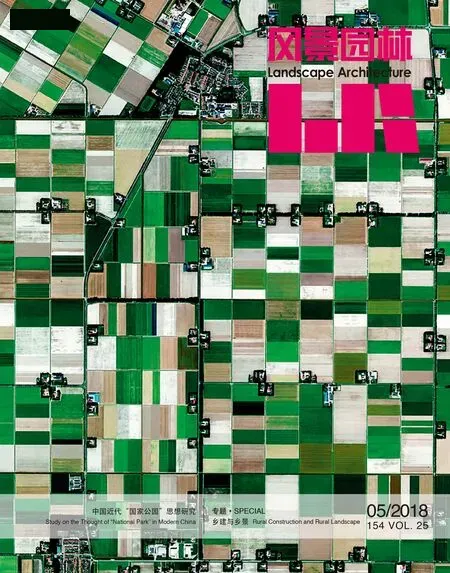PREFACE
Micro Urban Regeneration
I enjoy my every visit to Dashilan Area during the Beijing Design Week held in October. These maze-like streets have such pleasant-hearing, thought-provoking names as Tea Hutong,Charcoal Hutongs, Whisk Broom Hutong and Waxberry-bamboo Byway(Yangmeizhu Xiejie) Hutong. They have also comfortable walking scales, messy-looking but plain and intimate commoner livelihood. In conjunction to these are the various exhibitions inadvertently encountered inside the Hutongs and the renovated courtyards hidden behind inconspicuous doors. These street blocks are integrated the unique charm with old and modern, life and art,creating new public spaces and lifestyle. Apart from the wide range of professionals and ordinary tourists on leisurely visits, numerous elderlies and playful children gather in the exhibition halls and the regenerated courtyards, gossiping or having fun.
Next to the Dashilan Area lies the Qianmen Street, located on the central axis of Beijing. The spacious neat pavement, tall tidy buildings, cramped shops, clustered tourists without local residents indicate that it is a tourist-setting business service area. Although Qianmen Street is a pedestrian street, whenever I left the subway station toward Dashilan Area, I would rather make a noisy urban road detour to avoid it. However, who could ever have imagined the roads, buildings, residents of the Qianmen Street were once full of folk atmosphere of daily life with little difference from those of Dashilan Area except that Qianmen Street had more oldbranded shops. Since 2003 Qianmen Street and the neighboring blocks experienced “the largest, most heavily invested, most fundamental, most comprehensive renovation for nearly 600 years since the Ming Dynasty” when the traditional streets underwent various transformations to achieve “new looking”. In fact, in this renovation, the old buildings were basically dismantled and replaced with newly built pseudo-classic architecture so that the past diversity was transformed into current unity.
Qianmen Street and Dashilan Area adopted completely different approaches for urban renovation. The former method was widely used by Chinese cities over the past 30 years by overwhelmingly demolishing old blocks of buildings for new buildings to allow dilapidated and outdated structures refreshed with brand new look. Moreover, with the need of investment returns, after the renovation there were usually commercial programs introduced,triggering original residents’ relocation, causing the change of land use and the disappearance of past life along with the faded community identity and local affiliation. In contrast, there has not been major demolition construction in Dashilan Area. Instead, the government, citizens and designers have jointly participated in the renovation of the buildings, yards, streets and lanes in a cautious,gradual, small-scale and step-by-step manner. The old buildings turned for multiple uses and the street alleys have maintained its strong atmosphere of life and unique attractions. At the same time,the renovation was not confined to refurbishment of buildings and facilities because additional attention has been paid to improve the life quality of the citizens, scale extension of the Hutongs,maintenance of neighborhood vitality and the social significance.
With the continuous socioeconomic development, the urban space became invalid in meeting the needs of modern life so it is inevitably normal to improve the city through renovation.Nevertheless, the city is a complex organism with complicated relationships among various systems so that no theory or research has so far authentically reflected true laws of urban system changes. Large-scale transformation of the existing urban space and environment would bring about tremendous changes of the benefit structure casting profound impacts on citizen’s life with uncertain consequences. Alternatively, partial minor transitions of urban space are often more contributive in stimulating the internal dynamics of the city. This micro renovation process tends to closely follow the urban development laws producing results easier to control and more likely to bring about positive benefits.
After the World War II, closely packed high-rise buildings were constructed at downtown USA cites, so that the distant trees,mountains even the sky became invisible and cities turned into forests of reinforced concrete structures. To improve the urban environment, the 390-square-meter Parley Park was built among the gaps of the skyscrapers in New York in 1968, to create a quiet oasis and a pleasing humane space in the metropolis. Later, similar actions were taken in other parts of New York and also other large cities in USA. These pocket parks that are built along streets and alleys of the cities by making full use of interstitial spaces to produce humane venues and vigor to the public among the highrise buildings became subsequently an effective method to improve urban environment through intervention of small spaces in overpopulated areas.
Since the 1980s, Barcelona has adopted the urban renovation practice of Urban Acupuncture, which with similar method of traditional Chinese acupuncture therapy, carries out urban renovation one by one to key spatial nodes of the city. In a short term of time, hundreds of types of vibrant and creative urban public spaces were rebirthed. These small scaled spaces are connected into a safe and convenient public space network that can carry out various activities. It reshaped the urban environment of old city and restored the urban vitality that vanished due to the increasing motor vehicles.
New York’s pocket parks and Barcelona’s public spaces might not be considered “micro” in terms of the street block scale. But on the city scale they are indeed negligible small spaces. Yet to the whole city, these micro renovations to small spaces have had viable positive effect on the urban structure and life quality.
Urban renovation is a long-lasting continuous process. The focused renovation on some small-scale spaces may lead to the substantial improvement of surrounding living environment although the inputs and impact seem less impressive. Such urban renovation ties closely up with community life and widely participated by the community residents, so that it tends to observe the internal order and law of urban development with the perception of local people and to maintain the intrinsic identity of the neighborhood from perspective of the ordinary livelihood.

